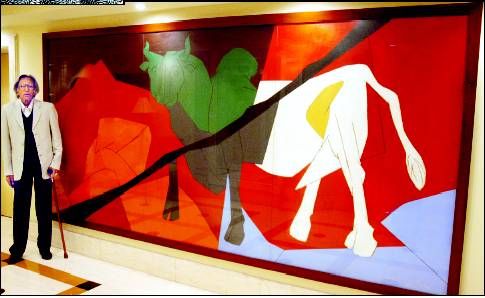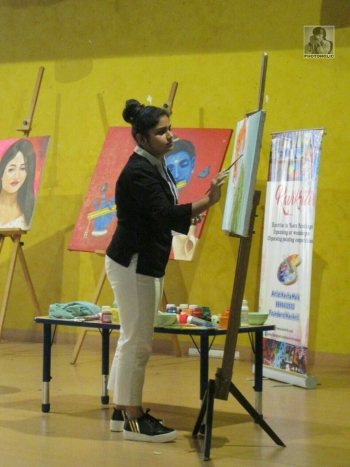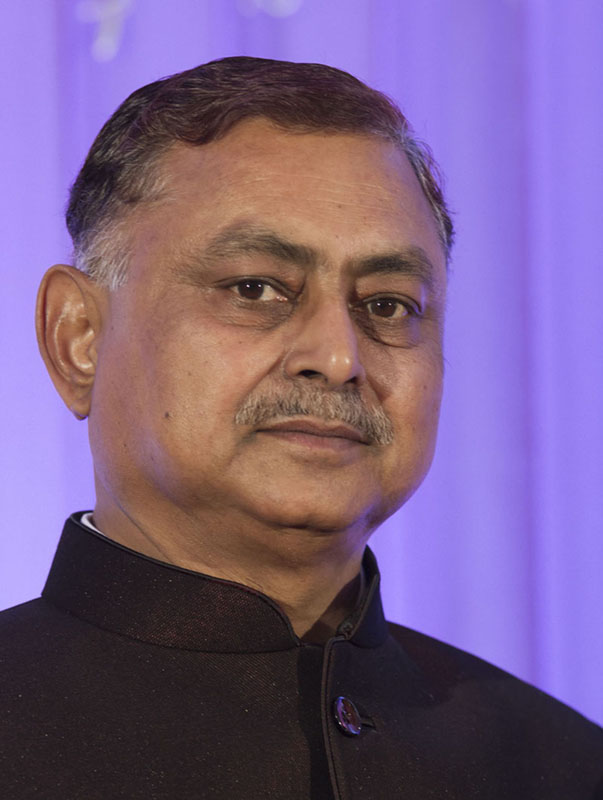
Revered as an icon by the art fraternity in India, Tyeb Mehta is counted as one of the greatest artists the nation has produced till date. He is amongst a select group of Indian painters whose paintings today command million dollar price tags at famous international art auctions globally and is a sought after asset for art collectors across the world.
Tyeb Mehta was born to in a Shi’ite Muslim family in Kapadvanj, Gujarat in the year 1925. As a child, he was witness to the communal riots that took place in India during the partition-riots of 1947. It had a deep impact on his paintings and themes that often depicted sharp and disturbing subjects. Although his family had a choice to move to Pakistan, they decided to stay back in India. He spent his entire childhood in Mumbai, India.
Mehta began his career as an editor in a film studio in Mumbai but his passion in art took him to the J.J. School of Art in Mumbai from where he pursued a diploma in arts in the year 1952. Soon after, he came in touch with one of his friends, Akbar Padamsee who introduced him to a new set of Indian artists who were experimenting with new art forms inspired by European art and was known as Progressive Artist's Group. It was an influential collective group of modern Indian artists like Francis Newton Souza, S. H. Raza. M. F. Husain and Manishi Dey.
Tyeb’s career was shaped by events and experiences of his personal life. His paintings were inspired by different forms of paintings which include modernism, abstraction, and cubism. He was also inspired by traditional Indian art forms and they find a reflection in his paintings. Tyeb portray evils of the contemporary society and puts emphasis on suffering, anguish, and dilemma of the common man in canvas. Over a period of time, his artwork grew bolder in style. The style of his paintings were highly composed and structured. His paintings represented human forms navigating between abstraction and illusionism. Mehta for the first time held his solo paintings at Jehangir Art Gallery in 1959 in Mumbai after which he left for London.
Unlike many of his contemporaries, he preferred to paint in solitude. Most of Tyeb’s paintings and sculptures were derived from real objects including broken human forms by uneven shape, distorted figure, and solid colors. The anguish figures of Mehta’s paintings were the outcome of horrors of partition which he witnessed on the streets of Mumbai during partition. He did not wish to abandon the concept of ‘figurativism’ from his paintings. He said "The human figure has become part of my vocabulary… It is a sort of vehicle for me. I am not a minimalist or abstract painter... my work is still expressionist. The human figure is my source, what I primarily react to. But in transferring that image to canvas, I begin to think in terms of modulating the canvas, distributing areas of color and apportioning space."
Some of his most popular paintings are:
- Mahishasura
- Rickshaw Pullers
- Trussed Bull
- Falling Figure and Bird
- Celebration
- Untitled- Figure on Rickshaw
- Gesture
Mahisasura was one of Mehta’s most famous painting series. It can be called a traditional art piece. The paintings in this series are said to inspire by a Hindu mythology tale wherein a demon-king produces a son through his union with a she-buffalo named Mahisasura. These painting were produced in the year 1996 and are a favorite with collectors in several global Modern Indian Art auctions. They command million dollar price tag and have been on a rise with each successive auction. Some art critics call that Mahisasura series was highly influenced by Picasso’s art who was highly influenced by the animal bull. His famous painting Guernica is such a case in point.
Tyeb’s paintings gained International attention and he became one of the best-selling Indian artists. His artworks are now benchmark of Indian art and his contribution to India was remarkable.
Mehta also pursued a deep interest in film-making. His career as a filmmaker was limited but highly acclaimed. His film ‘Koodal’ in 1970 won a critics choice award. Mehta remains an inspiration for budding Indian artists. He gave recognition to Indian art globally.





















